Alter ego Philbert Desanex | Species Phacochoerus Place of origin Squootpeep | |
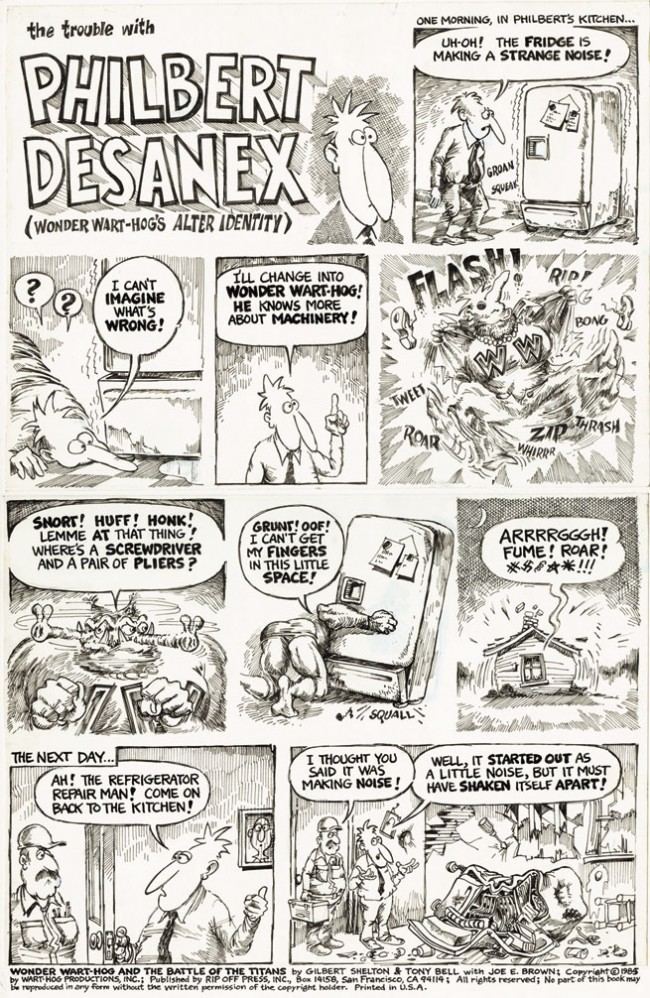 | ||
Created by Gilbert Shelton & Tony Bell Abilities flight, super strength, Invulnerability First comic appearance "Fearless, Fighting, Foulmouthed Wonder Wart-Hog," in Bacchanal (Mar. 1962) Similar The Fabulous Furry Fre, Fritz the Cat, Zippy the Pinhead, Omaha the Cat Dancer, Keep on Truckin' | ||
Wonder Wart-Hog (the "Hog of Steel") is an underground comic book character, a porcine parody of Superman, created by Gilbert Shelton and Tony Bell. Wonder War-Hog is a violent, reactionary, amoral "superhero" who hypocritically murders and rapes people he does not approve of.
Contents
- Fictional character biography
- Origin and publication history
- Drag Cartoons
- Underground comix
- Rip Off Press
- In popular culture
- References
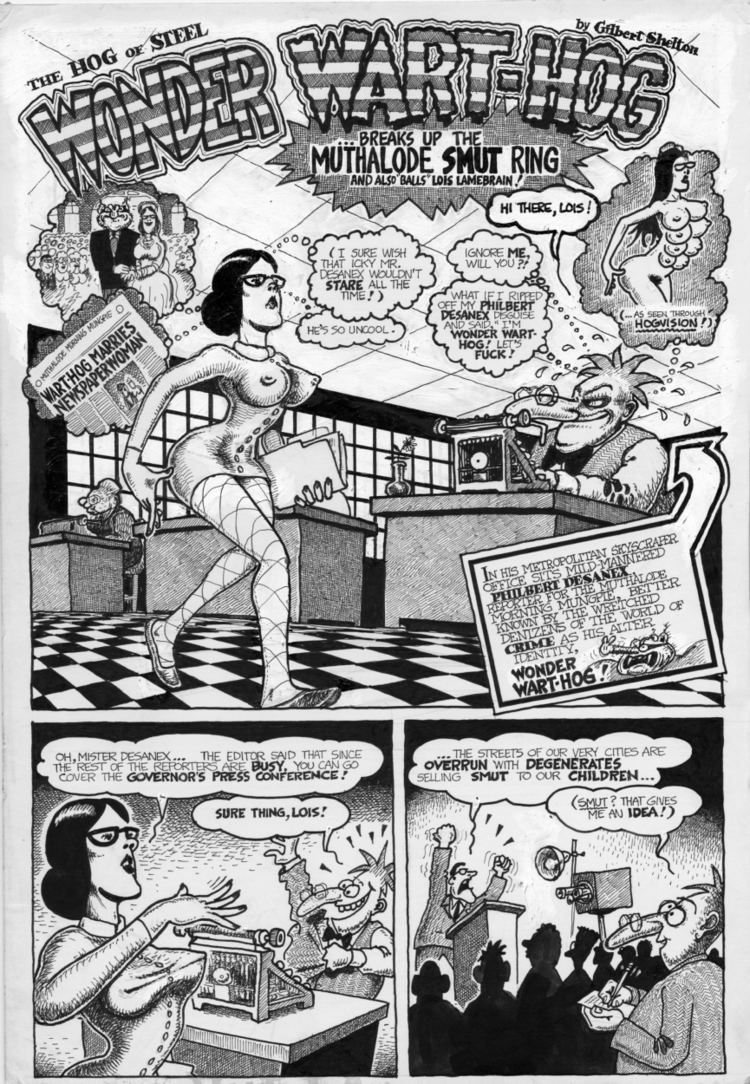
Fictional character biography
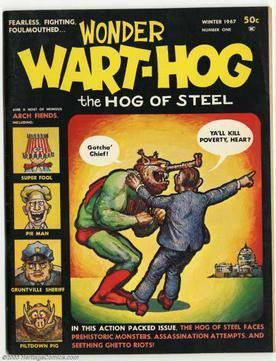
Wonder Wart-Hog is the son of the rulers of the planet Squootpeep, sent to Earth when Squootpeep's scientists predict the planet will soon explode. The infant porker is raised by hillbillies, not out of affection, but because his invulnerability prevents his being killed and cooked.
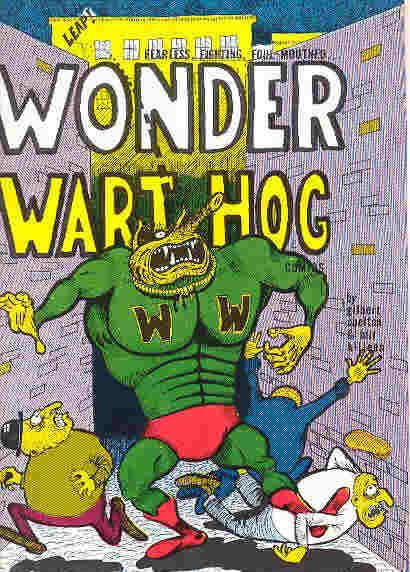
His secret identity is the mild-mannered reporter Philbert DeSanex, who works for the Muthalode Morning Mungpie. Instead of being a human disguised as a rubber-masked monster, Wonder Wart-Hog is a pig-faced monster who disguises himself as a rubber-faced human. (Occasionally, however, Shelton has depicted Wonder Wart-Hog and DeSanex as two distinct individuals, with Wonder Wart-Hog residing inside the reporter's body.)
Wonder Wart-Hog's love interest is Lois Lamebrain, an analog of Lois Lane.
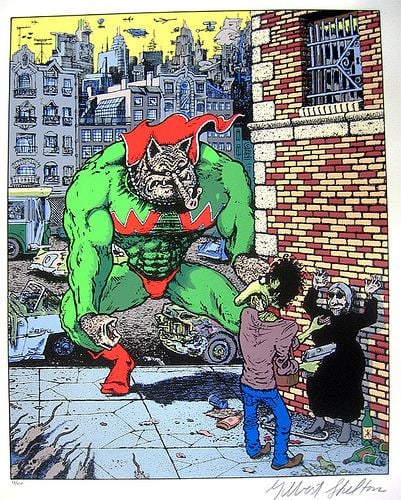
Wonder Wart-Hog has fought a number of foes, including Super Fool, Pie Man, Super-Patriot, the Gruntville Sheriff, the Piltdown Pig, Plastic Man, the Granny of Gruntville, the Bad Brainbender, Evil Weevil, and the Chameleon.
Origin and publication history
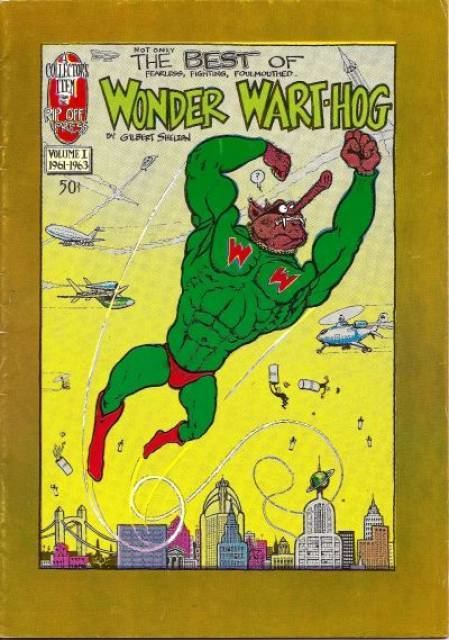
The idea for Wonder Wart-Hog came to Gilbert Shelton in 1961, while he was living in New York. The following year, Shelton moved back to Texas to enroll in graduate school and get student deferment from the draft. He then collaborated with Tony Bell. The first two Wonder Wart-Hog stories appeared in Bacchanal, a short-lived college humor magazine produced by former staffers at UT's humor magazine The Texas Ranger, in the spring of 1962. Shelton then became editor of The Texas Ranger (where he had first published work in 1959) and published more Wonder Wart-Hog stories. The character attracted the attention of Mademoiselle, which wrote about Wonder Wart-Hog in the August 1962 "College" issue. Harvey Kurtzman's Help! also published a few of the Hog of Steel's adventures in 1964–1965.
Drag Cartoons
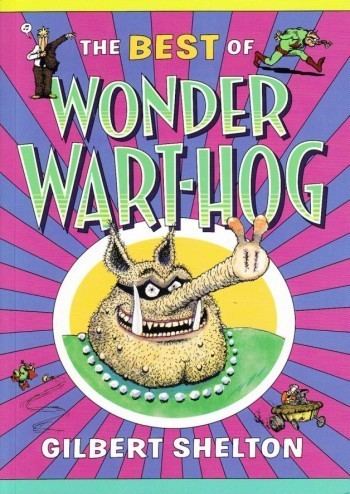
Pete Millar's DRAG Cartoons magazine published a Wonder Wart-Hog strip in the early 1960s. The first ongoing publication of Wonder Wart-Hog was in DRAG Cartoons issues 25-49 (1966–1968); several of those also featured another Shelton strip called Bull O'Fuzz. Issue #45 boasted several strips by Shelton, including a parody of West Side Story called "Vice Squad Story". Many of these strips were reprinted in 1968, when Millar Publishing Company released two issues of Wonder Wart-Hog Quarterly. 140,000 copies of each were printed, but distributors did not pick up the magazine and only 40,000 of each were sold.
The following stories from Drag Cartoons have never been reprinted:
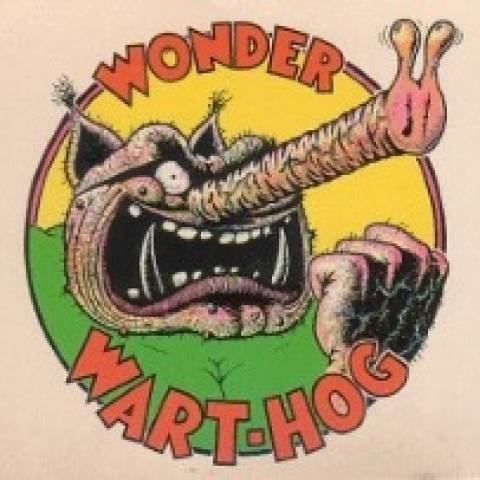
Underground comix
Wonder Wart-Hog's adventures were serialized in comic strip form in many underground newspapers and college newspapers from the mid-1960s through 1977.
In 1968, while still living in Austin, Texas, Gilbert self-published Feds 'N' Heads, which featured Wonder Wart-Hog as well as Shelton's other creation, The Fabulous Furry Freak Brothers. (Feds 'N' Heads was later reprinted multiple times by the Bay Area underground publisher Print Mint.)
Beginning late 1968, Wonder Wart-Hog began appearing in Zap Comix; he ultimately appeared in issue #3-5, 13, and 15 (the latter comic, published by Last Gasp in 2005, is the most recent appearance of the "Hog of Steel").
A Wonder Wart-Hog story also appeared in Radical America Komiks (Students for a Democratic Society, 1969), vol. III, #1 of Radical America, an SDS magazine.
Rip Off Press
By 1969, Shelton had moved to San Francisco, and that year he co-founded the underground publisher Rip Off Press with four friends from Texas: fellow cartoonist Jack Jackson, Fred Todd, and Dave Moriaty. Rip Off Press published the bulk of all later Wonder Wart-Hog comics. The character appeared in Rip Off Comix #1-12 (1977–1983) (with the exception of issue #7) and in several of the magazine-sized issues of Rip Off. His last new appearance in Rip Off Comix was in the 20th anniversary issue (#21) 1988.
Many of the Wonder Wart-Hog stories from Rip Off Comix were collected in three comic books from Rip Off Press in the mid-1970s, (Not Only) The Best of Wonder Wart-Hog. These three issues reprint all of the Rip Off stories (but not all of the covers and single page appearances) except for the following:
In addition, the story from Radical America Komiks was reprinted in Wonder Wart-Hog and the Nurds of November, a trade paperback published by Rip Off Press in 1980, which included a large collection of earlier material. That story was also released as a stand-alone comic book version in 1988.
Wonder Wart-Hog also appeared in the following one-shot Rip Off Press titles:
Three stories about Philbert Desanex from the trade paperback collection were released as a stand-alone comic, Philbert Desanex' Dreams (Rip Off Press, 1993). The stories center almost entirely around Wonder Wart-Hog's alter ego, with only a brief appearance by the Hog of Steel.
In popular culture
Australian cartoonist Tony Edwards's best-known creation, Captain Goodvibes, was inspired by Wonder Wart-Hog.
The lyrics for the Pink Fairies' "Pigs Of Uranus" (from the 1972 album What a Bunch of Sweeties) are taken from "Wonder Warthog and the Invasion of the Pigs from Uranus!" (Hydrogen Bomb and Biochemical Warfare Funnies, Rip Off Press, 1970).
